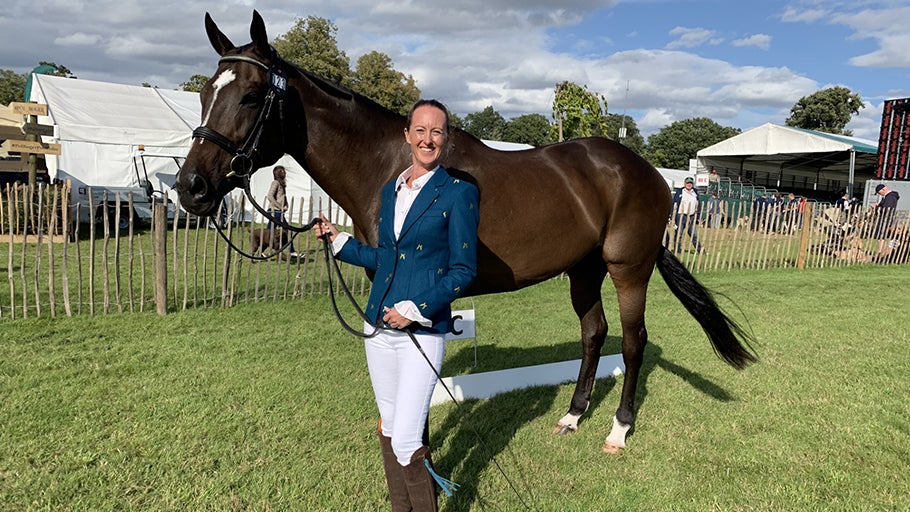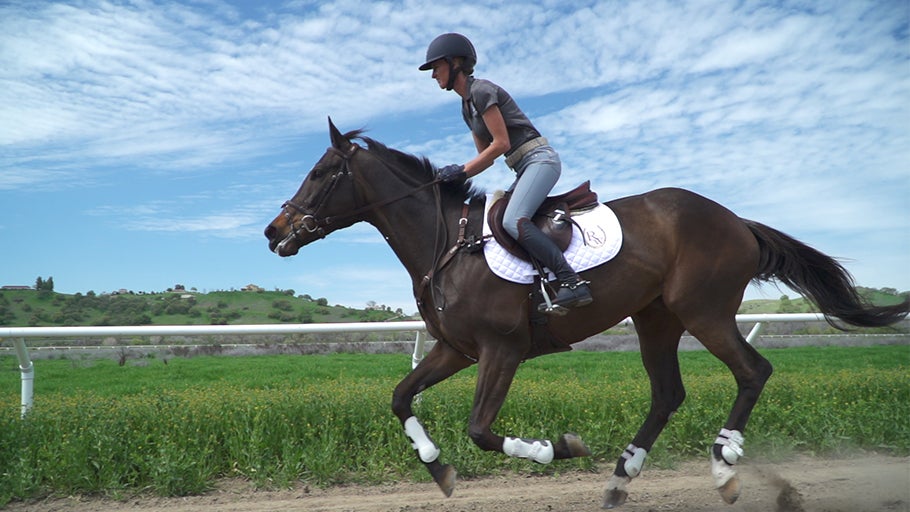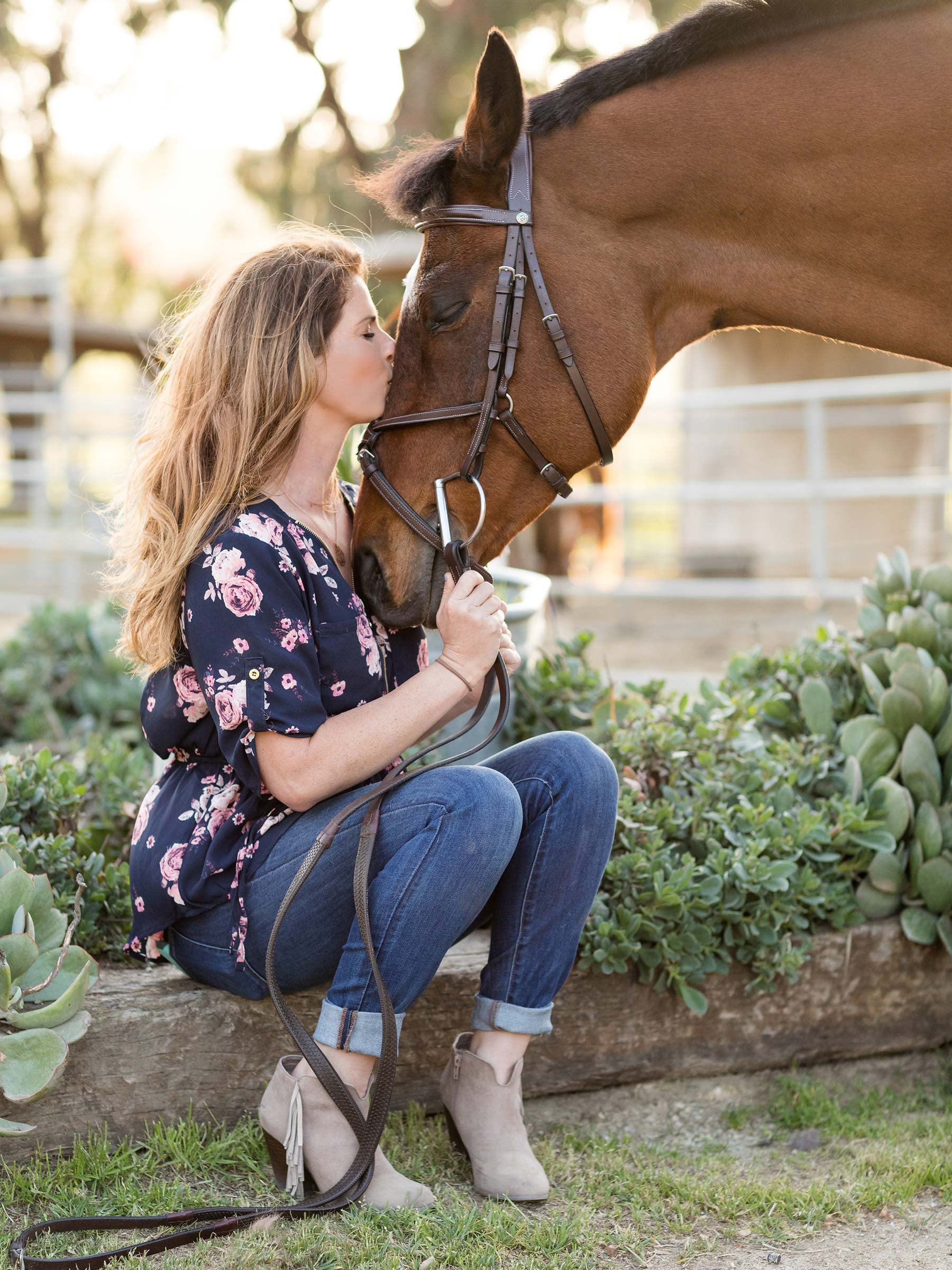
Walk a Show Jumping Course with Andrea Baxter
Show jumping is all about accurate timing and making a strong effort towards clean jumps. Knowing your course and how each jump is related to one another provides the most opportunity for success. Whether you are competing exclusively in show jumping, eventing, or riding hunters/equitation, the mechanics behind riding a clean course are the same.
In this video, RW Sponsored Rider Andrea Baxter talks through how she would walk a show jumping course. Being a 5* Eventer, Andrea has made an appearance at some of the most prestigious competitions in the world, including Land Rover Kentucky, Burghley, and Blenheim. Watch to get some of her top tips to keep in mind for your next show jumping round!
Key Takeaways from the Video
- At the beginning of your course and in between fences throughout, ride an energetic, balanced canter by keeping the horse’s hind legs active.
- After coming around a turn, connect the horse through a half-halt with the outside rein to make sure the whole body of the horse is straight towards the fence. Once the horse is straight and connected, you can then look for a distance to your fence.
- Land in a straight line, with all four feet on the ground before preparing to make your next turn.
- Stay collected with the horse’s hind legs underneath them in lines so that you can shorten or lengthen the horse’s stride as necessary.
- In bending lines, make sure your horse doesn’t lean to the inside, which will make the distance to your second fence shorter. Also be careful not to stay too far out on the line, which makes the distance to the next fence longer.
- Have plenty of energy coming into combinations and be patient with your upper body so that the horse is able to make a correct shape.
- In schooling, it is helpful to use ground rails rolled out from the jump to help show the horse where to take off from. When you show, there will not be ground rails, so you must show your horse how to sit down and take off from the correct distance.
A Note on Walking Distances
Most riders assume that one stride is equivalent to four human steps, or about 12 feet for the average horse. It’s easy to remember how many strides you have walked by counting which stride you are on every fourth step. For example, the first stride would be “1-2-3-1", the second stride would be “1-2-3-2", and so on.
Typically, we give the horse two human steps for takeoff and landing, which is equivalent to six feet for each. Schooling distances may be shorter to teach the horse to sit down and collect. For example, you may find that there are only three feet to account for takeoff or landing in schooling courses.
Frequently Asked Questions
Why do riders walk the show jumping course?
Walking a show jumping course helps a rider memorize their course as well as understand where to place their horse. Being spatially aware of the jumps and their distances helps the horse-and-rider pair strategize so they can successfully complete the course. Taking the time to walk the course solidifies related distances that are present; the course maps and designers provide the official measurement, but it is always a good idea to measure the related distances yourself. Jumps look very different on the ground!
How many jumps are in a show jumping course?
The number of jumps in a show jumping course depends on the level at which you are competing. It is important to understand the difference between ‘questions’ compared to obstacles. Questions refer to jumps that are labeled under the same number (labeled 1, 2, 3, etc.), whereas obstacles are the individual jump (labeled A, B, etc.). For example, if there is a two-stride combination, it would be one question with two obstacles. As you move up the levels, the number of questions and the difficulty of those questions increase.
How do you memorize a show jumping course?
There are multiple methods to memorize a jump course. Memorizing the pattern via the jump colors (ex. butterfly standards) is a concrete way to know what comes next; this is helpful for riders who might not categorize questions by jump type (ex. diagonal oxer). If the jumps themselves are relatively plain in color, then memorizing the jump type might be more effective. Some riders are more visual or auditory, so cater to what works best for you. Regardless of how you choose to identify the jumps, it is useful to walk the jump course multiple times, with and without a coach, to solidify your path and plan.
Closing Thoughts
No matter your discipline, knowing how to walk, comprehend, and ride a course is crucial. The whole goal of walking a show jumping course is to increase your depth of knowledge so that you can give your horse confidence and tools while jumping. Your personal style will be developed over time, so it is important to keep in mind that horse-and-rider pairs will approach courses differently. Working with your horse and riding style in conjunction with the course builder's intentions will produce the best result! We hope you enjoyed Andrea Baxter’s show jumping tips so you can more effectively complete a course. If you have any questions, please reach out to our friendly customer service team at 1(800)620-9145 or info@ridingwarehouse.com. Happy jumping!
Learn More from Andrea




